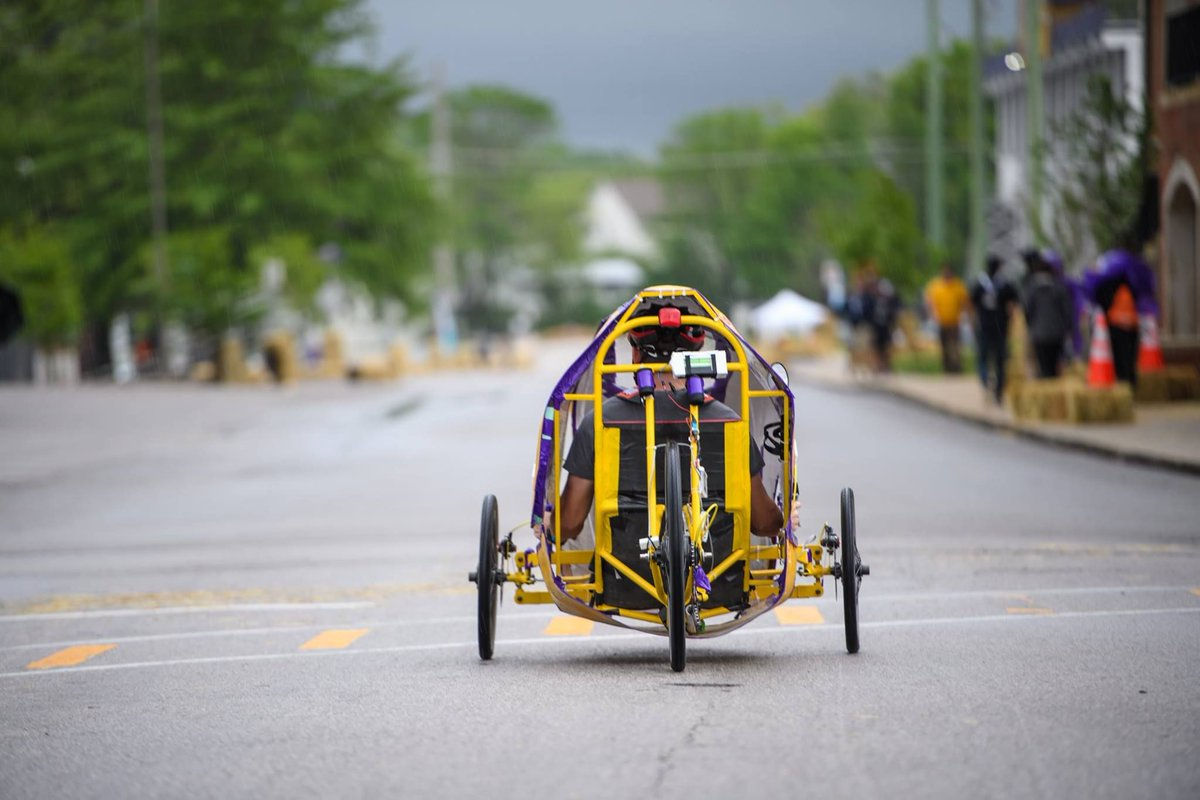
What is the project?
"The American Society of Mechanical Engineers international Human Powered Vehicle Challenge (ASME HPVC) provides an opportunity for students to demonstrate the application of sound engineering design principles in the development of sustainable and practical transportation alternatives." [1] We have come together as Team Ke Koa ʻEhā O Ke Alahele not only to take on this international challenge, but have come to it with the set goal of coming in at least third place overall. To do so, a list of requirements set by ASME must be completed and excelled. Those requirements are tested in a series of categorized events, including Design, Innovation, Men's Speed, Women's Speed, and Endurance, which all come together as an overall score.
Design Event: Accosting for 30 points of the total score, the design event is where the teams are scored on their application of sound engineering principles and practices toward vehicle design. A written report, technical presentation, performance safety video, and static judging of the vehicle must be completed to pass this event.
Innovation Event: Previous years have seen the innovation event having a smaller weight on the score, but with current interests in more innovation in vehicle production, this year's challenge has seen an increase in this category's points. Accosting for 20 points of the total score, the teams will be scored on the design and demonstration of a technical innovation related to their vehicle.
Men's and Women's Speed Event: Accosting for 25 points together, the men's and women's speed events test the teams on the speed of their vehicles in one of two ways: a flying start 100 meter sprint or a head-to-head drag race. The scores for the men's and women's events are recorded separately at 12.5 points each.
Endurance Event: Accosting for 25 points of the total score, the endurance event has the teams tested on the speed, practicality, performance, and reliability of their vehicle. The format of this event is a road race that has the rider navigating through urban transportation obstacles and challenges.
All of these events come together for an overall point total of 100. The team with the highest overall points wins the challenge. Placing top three in the overall category will reward teams with cash prizes and a trophy for their hard work and endeavors as a team. Placing first in any of the individual categories will reward the winning team with a cash prize and a trophy as well and placing second or third in the individual categories will reward the teams with a trophy.

The date for the challenge has been officially set as March 23 - 25, 2018. As for the location, as of November 14, it was announced that the ASME HPVC West will be held in the state of California. The exact location within the state is still unknown.
Where and When is it being held?

Figure 1: 2016-2017 UHM HPV team's vehicle at ASME HPVC West held at Las Vegas, Nevada
Why is this important?
With the rise of technology comes a better understanding of its impact on the environment around it. Every year, new models of cars are being placed on the market for purchase by civilians. While more economically friendly models have recently been introduced, such as Tesla’s electric vehicles, most modes of transportation still require the use of fossil fuels. Hawai‘i produces about 3.7 million tons of carbon emission per year from gasoline-powered vehicles alone [2]. 90% of the fuel used by these transportation methods are imported [3], resulting in inflated costs and limited resources for our residents. Reducing the usage of fossil fuels and CO2 emissions will benefit the community by lowering fuel-related imports, fuel consumption, and fuel costs.
Human powered vehicles are a very efficient alternative form of transportation. For instance, with energy amounts of 100 kJ, a rider on an upright bicycle can cover more than 5 km on a horizontal road at 20 km/h while a car can only travel about 200 m [4]. These numbers are further escalated based on the position of the rider, as the development of recumbent bicycles have constituted an even greater efficiency on horizontal and downhill roads.
The emergence of different forms of human powered vehicles such as the recumbent bicycle have further propelled the industry, where newer concepts aim to produce vehicles that are more geared towards rider ergonomics or greater mechanical efficiency. Recent studies have developed a method to quantify the empirical variable of ergonomics by breaking it down into a number of factors. As one article states, “The term success in ergonomics is measured by improved productivity, efficiency, safety, acceptance of the resultant system design and improved quality of human life [5].” By numerically defining ergonomics, human powered vehicles have evolved to an even further degree in this aspect, on par with previously quantified variables such as mechanical efficiency. In fact, current human powered vehicles powered by a chain and sprocket system have a mechanical efficiency ranging between 80% and 99%, where most of the energy is lost due to friction [6]. As prospective engineers, we will use such prior knowledge as reference to construct an innovative human powered vehicle that will be tested in the 2018 ASME Human Powered Vehicle Competition.
The American Society of Mechanical Engineers have encouraged the movement towards alternative forms of transportation by hosting the ASME HPVC, where students design and build human powered vehicles that compete in various events. The competition provides a grounds for collegiate minds to use innovative thought processes to further advance the human powered vehicle industry while simultaneously promoting a cleaner environment to younger generations.